Table of Contents
- Introduction
- Acoustic Pianos: An In-Depth Overview
- Digital Pianos: An In-Depth Overview
- Key Differences Between Digital and Acoustic Pianos
- Pros and Cons of Acoustic Pianos
- Pros and Cons of Digital Pianos
- How to Choose the Right Piano for You
- Conclusion
FAQs
- Can a digital piano truly replicate the feel and sound of an acoustic piano?
- How often do I need to tune an acoustic piano?
- Are digital pianos suitable for professional performances?
- How long do digital pianos last?
- Can I learn piano on a digital piano or keyboard, or do I need an acoustic piano?
- Do digital pianos hold their value?
- How much space do I need for a digital piano or an acoustic piano?
- Are digital pianos energy efficient?
Acoustic vs Digital Pianos – Introduction
Welcome to Kawai’s ultimate guide on acoustic vs digital pianos. This comprehensive resource is designed to help musicians, parents, piano teachers and enthusiasts navigate the world of pianos and make an informed decision when choosing between these two types of instruments.
We understand that selecting the right piano is a significant investment, both financially and in terms of personal satisfaction. As such, we aim to provide you with a thorough understanding of the key features, benefits, and drawbacks of digital and acoustic pianos.
In this guide, we will start by offering brief overviews of acoustic and digital pianos, outlining their primary types and characteristics. We will then delve into the main differences between the two, highlighting aspects such as sound production, tuning, portability, and price. Following that, we will present the pros and cons of both acoustic and digital pianos, allowing you to weigh their strengths and weaknesses.
Lastly, we will guide you through the process of choosing the right piano for you, taking into account factors such as budget, space, playing experience, portability, maintenance, and noise considerations. By the end of this article, you will have gained valuable insights into the world of pianos and be well-equipped to make a decision that suits your individual needs and preferences. So, let’s embark on this musical journey together!
Acoustic Pianos: An In-Depth Overview
Acoustic pianos, known for their timeless design and rich, resonant sound, have been the centrepiece of piano music for centuries. They are crafted with remarkable attention to detail, resulting in a unique blend of aesthetics and sound quality. In this section, we will explore the two main types of acoustic pianos—grand pianos and upright pianos—focusing on their construction, sound production, and variations.
Grand Pianos

Grand pianos are the epitome of classical elegance and are often considered the ultimate choice for professional pianists. Their horizontal soundboard and expansive size contribute to a superior tonal quality and dynamic range. There are several variations of grand pianos, classified by their size:
- Concert Grand: The largest and most prestigious of grand pianos, concert grands measure between 7 and 9 feet in length. They are typically used in concert halls and professional settings, offering unparalleled sound projection and clarity. Kawai’s concert grand piano line is exemplified by the Kawai GX-6, Kawai GX-7 & EX Concert Grand Piano.
- Semi-Concert Grand: Ranging from 6 to 7 feet in length, semi-concert grands are slightly smaller than concert grands but still deliver an impressive tonal range and volume. They are suitable for smaller performance venues and large living spaces. Kawai offers the following semi-concert grand pianos in this category: Kawai GX-3, Kawai GX-5, & Kawai GL-50,
- Parlor or Living Room Grand: Measuring between 5 and 6 feet in length, parlor or living room grands are popular choices for private homes and studios. They offer a balance between sound quality and space requirements. Kawai offers the following in this line: Kawai GX-2, Kawai GX-2 Limited Edition, Kawai GX-1, Kawai GL-40 & Kawai GL-30.
- Baby Grand: The smallest of the grand pianos, baby grands measure between 4 and 5 feet in length. They are ideal for home use, providing excellent sound quality while occupying minimal space. Kawai’s Baby Grand pianos include: Kawai GL-10 & Kawai GL-20.
Upright Pianos

Upright pianos, also known as vertical pianos, are more compact than grand pianos, featuring a vertical soundboard and a smaller footprint. They are designed to fit into smaller spaces, making them an excellent choice for homes, schools, and studios. Acoustic upright pianos come in various sizes, with the following being the most common:
- Full-Size or Professional Upright: Ranging from 48 to 52 inches in height, full-size or professional uprights provide a richer sound and better action compared to smaller models. They are suitable for serious pianists and institutions seeking a high-quality, space-saving option. Kawai’s K-Series upright pianos are great examples of professional uprights. This series includes the K-800, K-500, K-400 & K-300.
- Studio Upright: Measuring between 42 and 48 inches in height, studio uprights offer a balance between sound quality and size. They are popular choices for music schools, small studios, and homes. An example of category would be Kawai’s K-200 upright.
- Console: Console pianos, typically 40 to 42 inches in height, are designed with a focus on aesthetics and are often used as decorative pieces in homes. While their sound quality may not match that of larger uprights, they still provide a satisfying playing experience. Check out the Kawai 508 for an excellent example of these pianos.
- Spinet: The smallest of the upright pianos, spinets stand at 36 to 40 inches in height. They are suitable for small living spaces and for those who prioritize compactness over sound quality.
When examining acoustic pianos, it is essential to consider factors such as size, sound quality, and aesthetics. As you progress through this guide, you will gain a deeper understanding of the pros and cons of acoustic pianos and how they compare to digital pianos.
Digital Pianos: An In-Depth Overview
Digital pianos have become increasingly popular in recent years, as technological advancements have allowed them to closely emulate the sound and feel of acoustic pianos. These electronic instruments use digitally sampled piano sounds and sophisticated technology to deliver a versatile and convenient playing experience. In this section, we will delve deeper into the world of digital pianos, exploring their various forms, features, and capabilities.
Stage Pianos
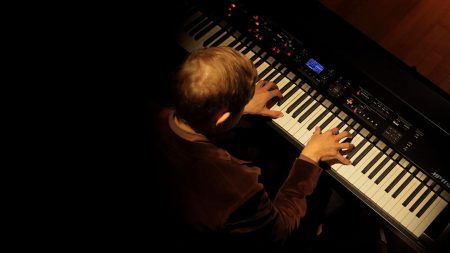
Stage pianos are designed specifically for professional performances and live settings. These instruments are typically more expensive than other digital pianos, as they offer a wide range of features tailored to meet the demands of professional musicians. Key features of stage pianos include:
- High-quality sound samples and a responsive touch for an authentic playing experience
- Multiple instrument voices, effects, and customizable settings for greater creative flexibility
- MIDI compatibility and connectivity options for easy integration with other equipment
- Durable construction and a sleek design for on-stage appeal
Kawai offers the following stage pianos: MP11SE & MP7SE.
Portable Keyboards

Portable keyboards are lightweight and versatile, making them an excellent option for beginners, hobbyists, and musicians who require a transportable solution. They often come with built-in speakers, eliminating the need for external amplification. Some key features of portable keyboards include:
- A wide range of instrument voices, rhythms, and accompaniment options for diverse musical exploration
- Built-in learning tools and features, such as piano lesson modes and metronomes, to aid piano students in skill development
- Battery-powered operation for greater portability and convenience
- Connectivity options for external devices, such as smartphones and tablets, for expanded functionality
Kawai’s portable ES line is a great example of this category: ES920, ES520, ES110 & ES120.
Console-Style Digital Pianos

Console-style digital pianos aim to replicate the appearance and feel of acoustic pianos while offering the benefits of digital technology. These musical instruments often feature weighted keys and a more traditional design, making them a popular choice for pianists seeking an authentic experience with the added perks of a digital instrument. Key aspects of console-style digital pianos include:
- Weighted and graded hammer action keys for a realistic playing experience
- High-quality piano samples and advanced sound engines for improved sound reproduction
- Built-in recording and playback features for practice and performance enhancement
- Integration with music learning apps and software for a more engaging learning experience
Modern digital pianos cater to a wide range of needs and preferences, offering musicians a more convenient and adaptable alternative to traditional acoustic pianos. As you continue to explore the differences between digital and acoustic pianos, you will gain a better understanding of their respective advantages and disadvantages, allowing you to make an informed decision regarding which type of piano is right for you based on your unique requirements.
Check out Kawai’s CA Series (CA 901, CA 701, CA99, CA59 & CA49), CN Series (CN301, CN201 & CN29) & KDP Series (KDP75 & KDP120)
Key Differences Between Digital and Acoustic Pianos
This section will provide an in-depth analysis of the key differences between digital and acoustic pianos, delving into aspects such as sound production, action, tuning and maintenance, portability, volume control, and price. This comprehensive comparison will help you better understand the unique characteristics of each instrument type and guide you in selecting the right type of piano to suit your needs.
Sound Production
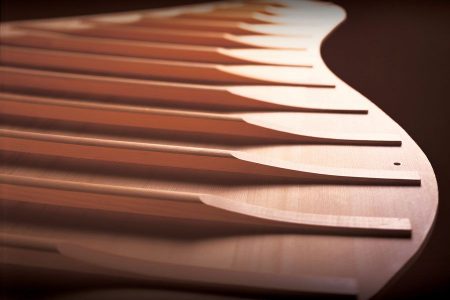
One of the most significant differences between digital and acoustic pianos lies in their sound production methods:
- Acoustic Pianos: Acoustic pianos create sound through the mechanical action of hammers striking strings. This process results in rich, natural harmonics and a unique resonance that is a difficult timbre to replicate electronically. The soundboard, which amplifies the vibrations of the strings, also contributes to the distinct tonal qualities of acoustic pianos.
- Digital Pianos: Digital pianos reproduce sound by playing back high-quality recordings of acoustic pianos, which have been digitally sampled and stored in their memory. Advanced sound engines and algorithms are used to simulate the nuances and complexities of an acoustic piano’s sound, including factors such as string resonance, damper and sustain pedal effects, and key-off samples.
Action and Touch
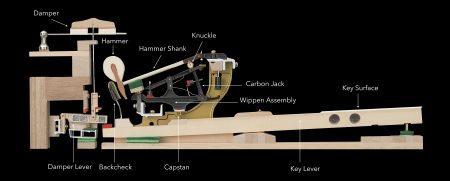
The action and touch of a piano are crucial factors that influence the overall playing experience:
- Acoustic Pianos: Acoustic pianos feature a complex mechanical action that allows for expressive and nuanced playing. The weighted keys and graded hammer action provide a tactile and responsive feel, enabling players to control dynamics and articulation with precision.
- Digital Pianos: Digital pianos aim to emulate the key action of acoustic pianos through various technologies, such as weighted keys, graded hammer action, and simulated escapement mechanisms. While some high-end digital pianos come close to replicating the feel of an acoustic piano, there may still be subtle differences in touch sensitivity and response compared to the real thing.
Tuning and Maintenance
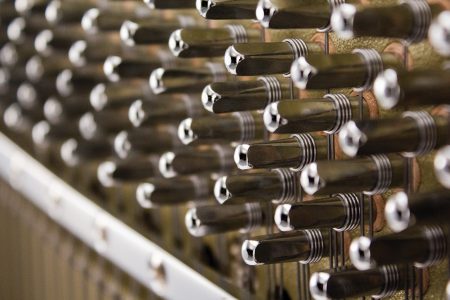
Tuning and maintenance requirements are essential considerations when comparing digital and acoustic pianos:
- Acoustic Pianos: Acoustic pianos require regular tuning and maintenance to keep them in optimal playing condition. Factors such as temperature, humidity, and usage can affect the tuning stability and overall performance of the instrument. Upkeep may also include voicing, regulation, and occasional repairs or part replacements.
- Digital Pianos: Digital pianos do not require tuning, as their sounds are generated electronically and remain consistent over time, never going out of tune. They also require minimal maintenance, with occasional cleaning and software updates being the primary concerns.
Portability
The size and weight of a piano can impact its portability and ease of relocation:
- Acoustic Pianos: Acoustic pianos, particularly grand pianos, are large, heavy, and cumbersome, making them challenging to transport and relocate. Even upright pianos, though smaller, can still be difficult to move without professional assistance.
- Digital Pianos: Digital pianos are generally more portable and lightweight compared to acoustic pianos. Portable keyboards and stage pianos, in particular, are designed for versatility and easy transportation, while console-style digital pianos may still be more manageable than their acoustic counterparts.
Volume Control
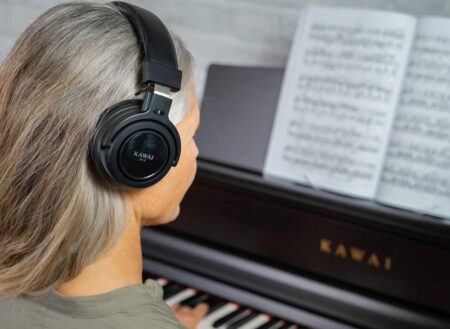
The ability to control volume and practice silently can be crucial for pianists in various environments:
- Acoustic Pianos: Acoustic pianos do not offer volume control, and their sound can be quite loud, especially in small spaces. While some acoustic pianos feature a practice pedal or “silent” system, these options may not be as effective as the volume control found on digital pianos.
- Digital Pianos: Digital pianos allow for precise volume control, enabling players to practice quietly or use headphones for silent practice. This feature is particularly beneficial for those living in apartments or shared spaces, as well as for late-night practice sessions.
Price and Affordability
The cost of a piano can be a significant factor in the decision-making process:
- Acoustic Pianos: Acoustic pianos tend to be more expensive than digital pianos, particularly high-quality grand pianos crafted by reputable manufacturers. The craftsmanship, materials, and labor involved in producing an acoustic piano contribute to its higher price. Additionally, ongoing costs, such as tuning and maintenance, can add to the overall expense.
- Digital Pianos: Digital pianos are generally more affordable, with a wide range of options available to suit various budgets. Even the best digital pianos with advanced features and a realistic touch can be less expensive than their acoustic counterparts. Furthermore, the minimal maintenance and tuning requirements of digital pianos contribute to their cost-effectiveness.
By examining these key differences between digital and acoustic pianos, you can better understand the unique characteristics, benefits, and drawbacks of each instrument type. With this knowledge in hand, you can make a well-informed decision when choosing the right piano for your specific needs and preferences.
Pros and Cons of Acoustic Pianos

Pros
- Rich, natural sound quality
- Authentic playing experience and touch
- Aesthetic appeal and craftsmanship
- Potential for increased value over time
- Wide dynamic range
Cons
- Requires regular tuning and maintenance
- Generally more expensive
- Less portable and heavier
- No volume control or headphone compatibility
Pros and Cons of Digital Pianos

Pros
- More affordable, especially for beginners
- No tuning or maintenance required
- Portability and lightweight design
- Volume control and headphone compatibility
- Variety of features, such as recording capabilities and multiple instrument voices
Cons
- Sound quality may not be as rich and natural as acoustic pianos
- Weighted keys may not perfectly replicate acoustic piano touch
- Digital technology may become outdated
- Limited dynamic range compared to acoustic pianos
How to Choose the Right Piano for You
When deciding between a digital piano vs acoustic piano, consider the following factors:
- Budget: Determine how much you are willing to spend on a piano. Digital pianos are generally more affordable, while a high-quality acoustic instrument can be quite expensive.
- Space: Consider the space available in your home or studio. Acoustic pianos, particularly grand pianos, require more space, while digital pianos are more compact.
- Playing Experience: If you value an authentic piano playing experience with a rich, natural sound, an acoustic piano may be the better choice. However, if you need a versatile instrument with a variety of features, a digital piano could be more suitable.
- Portability: If you need an instrument that is easy to transport for gigs or performances, a digital piano or portable keyboard is a more convenient option.
- Maintenance: Acoustic pianos require regular tuning and maintenance, which can be time-consuming and costly. Digital pianos, on the other hand, require minimal maintenance.
- Noise Considerations: If you live in an apartment or need to practice quietly, a digital piano with volume control and headphone compatibility is a practical choice.
Conclusion
In conclusion, the choice between acoustic vs digital pianos ultimately depends on your individual preferences, budget, and requirements. Both types of instruments have their unique advantages and disadvantages. By considering the factors outlined in this guide, you can make an informed decision and find the perfect piano to suit your needs. Happy playing!
Frequently Asked Questions (FAQ)
Q1: Can a digital piano truly replicate the feel and sound of an acoustic piano?
While high-end digital and hybrid pianos have made significant strides in emulating the touch and sound of acoustic pianos, there may still be subtle differences that set them apart. Some players may notice slight variances in the responsiveness, dynamics, and overall playing experience. However, digital pianos continue to improve, and many models offer a remarkably authentic experience.
Q2: How often do I need to tune an acoustic piano?
The frequency of tuning can depend on various factors, such as the age of the piano, environmental conditions, and usage. Generally, it is recommended to tune an acoustic piano at least twice a year. New pianos may require more frequent tuning during their first year, while well-maintained pianos may remain stable with fewer tunings.
Q3: Are digital pianos suitable for professional performances?
Yes, digital pianos, particularly stage pianos, are designed for professional performances and live settings. They offer high-quality sound samples, multiple instrument voices, effects, and customizable settings, allowing piano players to adapt their sound to different venues and musical genres.
Q4: How long do digital pianos last?
The lifespan of a digital piano can depend on factors such as build quality, usage, and maintenance. With proper care, a digital piano can last for many years, even decades. However, it is essential to consider that the technology and sound quality may become outdated over time, and parts may become more challenging to find or replace as the piano ages.
Q5: Can I learn piano on a digital piano or keyboard, or do I need an acoustic piano?
A digital piano or keyboard can be an excellent tool for learning, especially if it has weighted piano keys and a realistic touch. Many digital pianos and keyboards also feature built-in learning tools, such as lesson modes, metronomes, and integration with music learning apps, which can enhance the learning experience.
Q6: Do digital pianos hold their value?
Digital pianos, like most electronic devices, can depreciate in value due to the constant advancements in technology. However, well-maintained digital pianos from reputable brands can still retain a reasonable resale value, especially if they offer high-quality sound and features.
Q7: How much space do I need for a digital piano or an acoustic piano?
The space required will depend on the type and size of the piano. Acoustic pianos, especially grand pianos, require more space than digital pianos. Upright pianos are more compact but still larger than most digital pianos. Digital pianos, such as portable keyboards and stage pianos, require the least amount of space and can often be stored away when not in use. It is essential to measure the available space before purchasing a piano to ensure a proper fit.
Q8: Are digital pianos energy efficient?
Yes, digital pianos are generally energy efficient, as they consume less power than many household appliances. Most digital pianos have a power-saving mode that minimizes energy consumption when the instrument is not in use. Additionally, some portable keyboards can be powered by batteries, providing an even more energy-efficient option.
